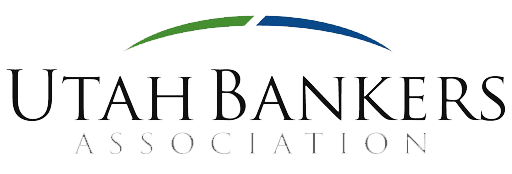As the Federal Reserve aggressively hikes interest rates to tamp down inflation, depositors are starting to demand more for their money.
Results from IntraFi’s most recent quarterly survey of bank executives indicate the trend is likely to continue. Ninety-five percent of respondents expect funding costs to go up, and 71% said deposit competition will increase. But this doesn’t mean banks have to let macroeconomic forces or competitors dictate their strategies.
Matt Pieniazek, president and CEO of Darling Consulting Group, recently joined me on the Banking with Interest podcast to discuss how banks should think about their balance sheets in the current interest-rate environment. He explains why all institutions need clearly documented game plans, how to extricate rate from the value proposition, why rising rates are a good thing, and much more.
What follows is our conversation, edited for length and clarity:
What are you seeing right now vis-a-vis banks and bank balance sheets?
The majority of banks aren’t overly concerned about losing relationships. They’re facing deposit pressures in a few areas, but the funds they’ve lost have been mostly discretionary. However, things are about to get interesting.
That sounds ominous. What do you mean?
During the last rising-rate environment, the Fed took nearly two years to increase rates by 200-225 basis points, and deposit-rate changes were nearly three times as responsive to the second hundred basis points as they were to the first. Similarly, during the period leading up to the Great Recession, we had a 425-basis-point move. Things were pretty tame during the first 200 basis points, but by the third and fourth hundred, the proverbial gloves came off.
Rates have now risen uncharacteristically aggressively in a short period of time – in fact, the delta between market rates and what banks are paying has never gotten this wide this fast. Even if depositors aren’t looking to move their money, it’s hard for them to ignore what’s happening.
Additionally, during the pandemic, we made it easier to do things electronically and conditioned customers to avoid branches. Today, banking practices are very different than they were three or four years ago. So the dynamics are about to get really interesting, notwithstanding the excess liquidity still out there.
What’s your advice to banks?
Have a clearly documented game plan. (Many banks don’t.) Start by figuring out how much money you can, or are willing to, let leave; then determine which deposits are most valuable and prioritize those.
Next, divide your deposit base into manageable pieces. Start by rank-ordering your largest-balance relationships; this will help with one-off conversations. Second, review your mass-market, traditional banking relationships. Third, review the “tweeners,” or those that aren’t quite whales but larger discretionary balances that could be at risk (mid-tier balances comingled with operating balances in those traditional accounts).
Get your people in a room to assess the elasticity of deposits in each sector and your value proposition for those different consumer types, specifically, whether it’s driven by rate or other factors. Figure out your pricing strategy for each and how much outflow you’re willing to accept in each area and why.
You recently wrote that all banks have what appear to be core deposits but are actually Trojan Horses. What did you mean?
Monies that look like core deposits but have a high potential for disintermediation. Municipal deposits are one kind of Trojan Horse. Large commercial balances are another – many businesses have funds sitting in their banks that dwarf what they need for operations, but they’re also facing cost pressures, and it’s hard to ignore the opportunity to pick up notably incremental yield on their excess cash. If they do need money, many will “borrow” from themselves. The third kind is CDs. CD balances have contracted notably through this cycle, but much of that is CD-mentality money sitting in savings accounts, now accounts, or money markets that’s going to move back into CDs.
What should banks be thinking about if rates keep rising?
Everyone seems to get overly fixated on rising rates and how high they might go, but no matter what a bank’s interest rate risk profile is, the worst scenario for this industry would be for rates to do an about-face and head lower for three reasons: 1) Funding costs can only go so low, but assets will keep pounding down until eventually everybody’s margins get squeezed – it’s just a matter of how quickly and to what degree; 2) declining rate environments are highly correlated with declining economic environments, which are highly correlated with asset-quality challenges, delinquencies, and elevated reserves; and 3) when economic activity slows, the outlook for loan growth darkens.
How is social media adding to deposit pressures?
It’s definitely having an effect. But banks need to remember that there’s always somebody paying more than them. If rate were the most important variable, every other bank would go out of business, and you’d have one big bank paying the highest rates. The point I’m making is that if banks fuel conversations about rate to where it becomes the main topic of discussion, they’re communicating that their value proposition is mainly tied to rate instead of the other things they bring to the table. Conversely, depository institutions that believe in their value propositions will do well during this cycle because they’ll know where they can be proactive. They’ll experiment more, try more things.
What are your thoughts on strategies for banks that aren’t dealing with excess liquidity?
I’ll start by saying there are many banks with concentrations of large balances that don’t want pricing on these to upset the apple cart. They don’t want a handful of accounts messing up their core deposit strategies, so they’ve been paying higher rates than usual. Then they’ve been going and selling the money into a deposit network, such as IntraFi’s, through its One-Way Sell program. This enables them to effectively lower their deposit costs and keep the money out of their deposit expenses by moving it off the balance sheet, knowing they can bring it back on if necessary.
Public banks with valuations that reflect a highly inelastic core-deposit base through prior cycles don’t want to change the Street’s perception with beta moves that have nothing to do with their true base of core deposits. They’d prefer to move all their discretionary monies into repos, so they become a borrowing cost, or just sweep them off so they can actually generate some fee income and, in effect, slow the rise in their deposit costs. They’re also starting to worry about reputation risk, which is a first for me (and I’ve been doing this for a long time).
Coming back to your question, banks that are borrowing money are actually pushing local market pricing up. They don’t match wholesale, but they’ve got a long runway given the delta between market rates and what other banks are paying. They’ll pay a lot more than other institutions, but they’ll also save a lot. Right now, borrowing banks are facing high opportunity costs, so if they’re dealing with a larger account, they’re more apt to pay up or negotiate. Otherwise, they’ll just have to replace them with something substantially more expensive.
Loan growth was good in the second quarter, but in the third quarter, there were signs of it faltering. What have you been hearing?
There’s a clear consensus that pipelines have peaked. When we talk to banks about forecasts, many anticipate making half as many loans next year as they will make this year. Hurdle rates are up because of interest rates, there’s lots of uncertainty surrounding any kind of real estate, and businesses aren’t as comfortable making investments right now. Banks themselves are pulling back on some concentrations, asking tougher questions.
We’ve seen a lot of disruption in the past two years from COVID and other factors. How should banks be thinking about ALCOs right now?
Way too many ALCOs tend to be more of a reporting function that spends too much time creating detailed decks that do little more than give people headaches. Then, toward the end of meetings, they’ll shoehorn in conversations on what to do. Those institutions have it backward. ALCO should feed strategy. It should be a profit center, not the cost center it
tends to be.
What are the biggest mistakes banks are making today?
One is that they’re not changing loan pricing to levels that represent fair, risk-adjusted returns. They’re letting the liquidity overhang get in the way. The majority of banks – not all – are knowingly doing deals at perhaps the tightest spreads ever. But their business models don’t support FHLB plus 150 to 200. They don’t support SOFR plus 150 to 175. They don’t support prime minus 100 or more. Banks have to get away from all that. They can’t let irrational/desperate competition dictate their ongoing lending strategies. They need to improve their balancing act.
Another is that many banks don’t socialize the logic underpinning their value propositions. They don’t explain how to deflect objections to those who work on the front lines. They don’t institute formal feedback loops, either. Banks should never underestimate the importance of communication, coaching, and guidance.








